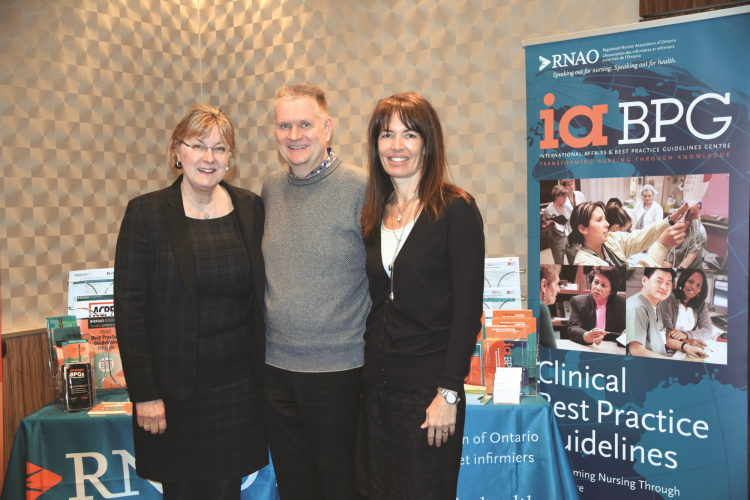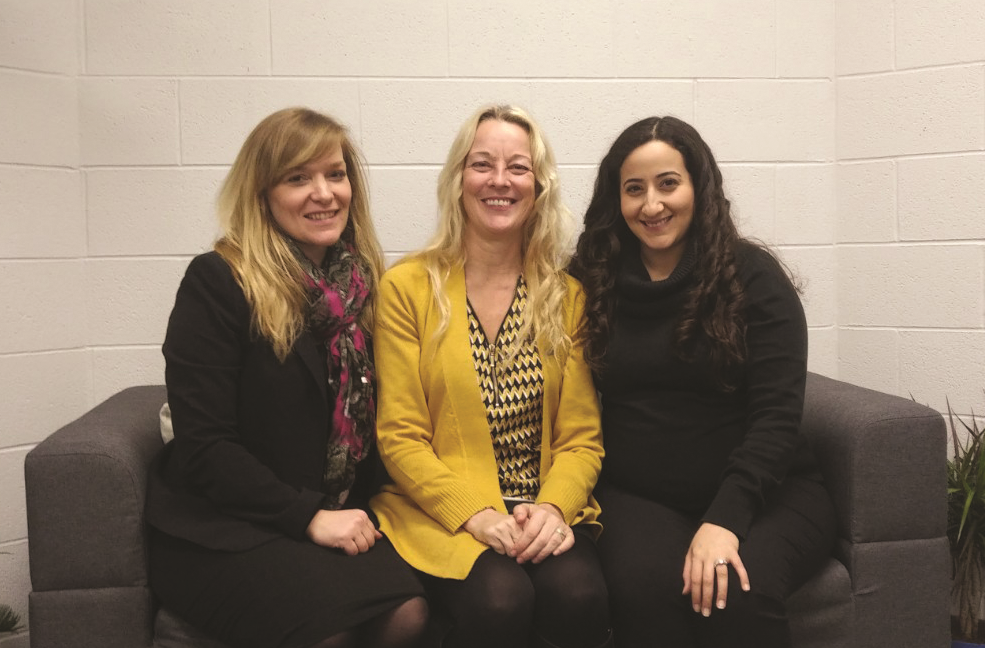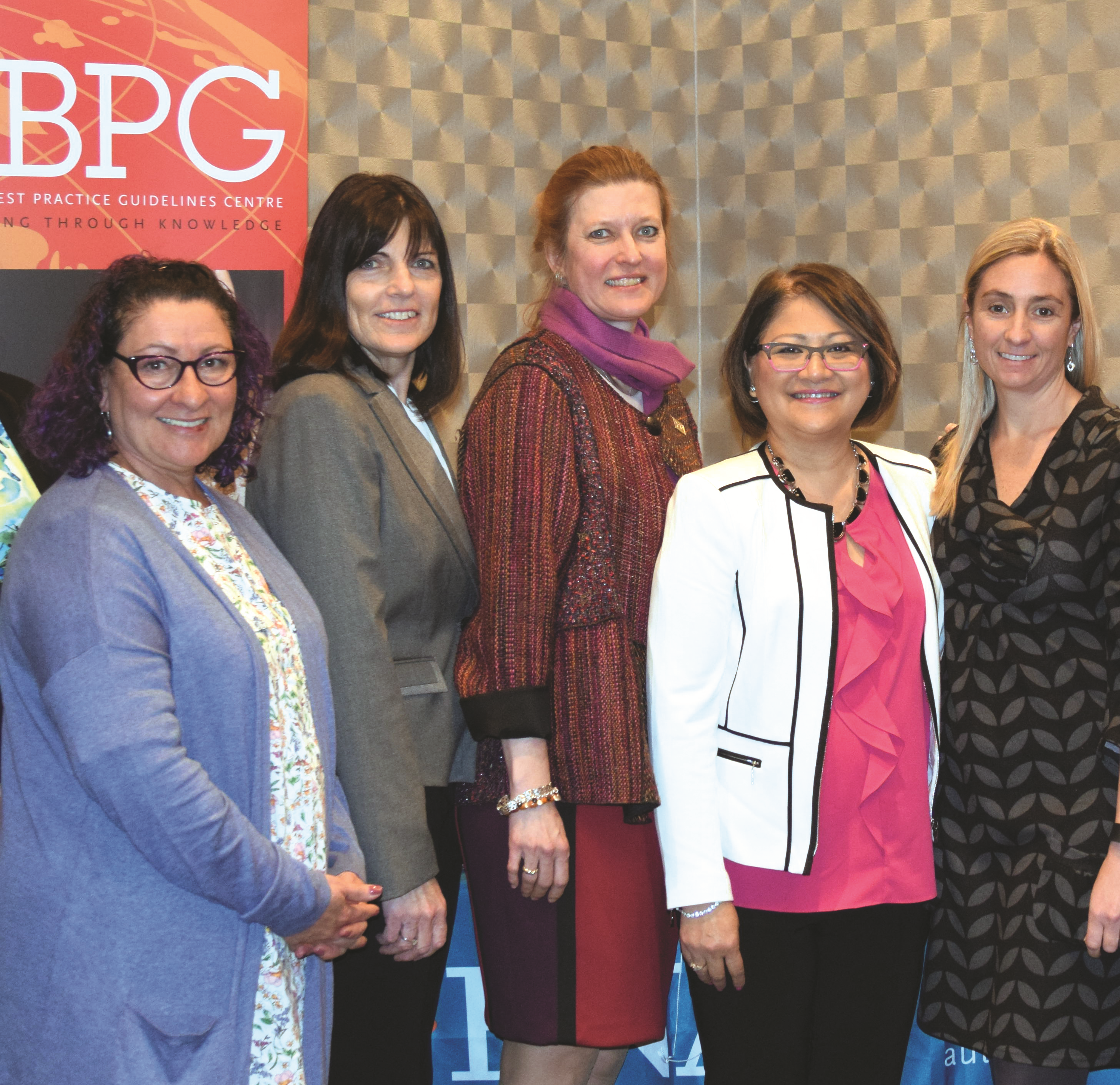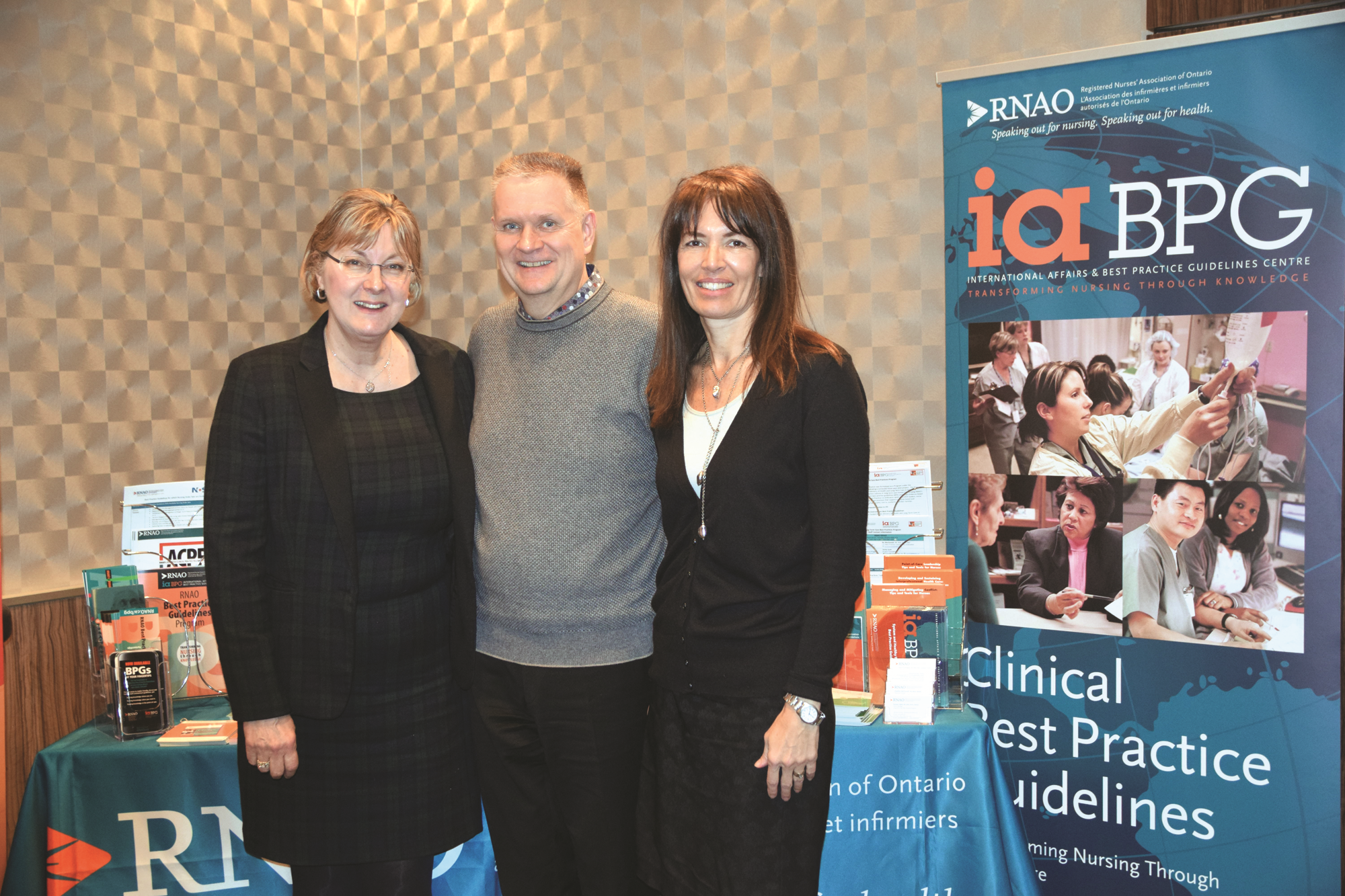
Public health units, primary care clinics, home health organizations, hospitals and long-term care homes that have already achieved or are working towards Best Practice Spotlight Organization (BPSO) designation have been successfully implementing RNAO’s best practice guidelines (BPG) for years, many for well over a decade. Last spring, three academic organizations in Ontario joined the movement.
RNAO’s clinical BPGs have been implemented informally in many universities and colleges in Ontario and other jurisdictions in Canada, explains Althea Stewart-Pyne, BPG program manager and BPSO coach to Conestoga College. She and fellow implementation science managers Susan McNeil, who is coach for Nipissing, and Grace Suva, coach for Ryerson, all agree that implementing BPGs in health service organizations (like those noted above) is more clear-cut than in academic institutions, especially when it comes to measuring outcomes. Academic settings need to build it into the curriculum and create a culture shift that ensures faculty and students understand the recommendations, and how to apply them in their course work and clinical placements.
It’s an important undertaking, and each site recognizes that “evidence-based practice starts at the beginning…with students,” Stewart-Pyne says.
We check in with this newest cohort of academic BPSOs to find out what they’ve been up to since beginning their journey last April.
Conestoga College
An interprofessional approach
“We’re really excited,” says RN and BPSO lead Michelle Heyer, associate director for the Schlegel Centre for Advancing Seniors Care at Conestoga College. “We see the value and what it means for our school and for our students going out into the workforce.”
According to Heyer, students have been at the centre of everything Conestoga has done to date as a BPSO pre-designate. What sets them apart from other academic sites is the focus on students in the school’s nursing programs and also in programs for occupational therapy assistants, physiotherapy assistants, personal support workers, paramedical professionals and police foundation students.
“We really optimize interprofessional learning at Conestoga,” Heyer explains. “There’s a whole learning environment that focuses on interprofessionals coming together in simulation labs where students from different professions can learn, talk, and understand their different roles.” After all, she continues, they will be working alongside one another when they enter the workforce. Right from the beginning, we have seen our approach to BPG implementation from this lens, Heyer says. In fact, implementation across programs was a focus of the BPSO pre-designate proposal.
So far, five programs have completed a gap analysis of three of the five BPGs slated for implementation. Those three BPGs focus on management of pain, management of pressure injuries, and falls prevention. “We started with three,” Heyer says, “and moving forward, will branch out to the other two, which are delirium, dementia and depression, and decreasing the use of restraints.”
Heyer admits it hasn’t been easy, but “…we’re willing to put in the hard work to achieve this goal for Conestoga.”
The biggest hurdle is evaluation of the process, she suggests. Outcome indicators in the BPGs are really focused on the clinical environment. “This is the only challenge we haven’t been able to navigate yet,” she says, while suggesting that with challenge comes opportunity. “We want to be part of the process…we would love to play a role in developing the indicators that can eventually be used by all academic sites.”
Nipissing University
Going the distance
While BPSO leads at Nipissing University are already members of a working group developing indicators, their primary focus right now is on the enormous task of implementation across four nursing programs. In addition to its collaborative BScN program and on-campus RPN-to-BScN bridging program in North Bay, Nipissing has a three-year blended program (online), as well as its Scholar-Practitioner Program in Toronto.
The BPSO initiative is a true “school of nursing venture…all our students are becoming engaged in it,” says Louela Manankil-Rankin, who, along with Karey McCullough, wrote the proposal to become a BPSO pre-designate. It encompasses all students and faculty – a combined 1,700 at all sites, she says. It is “complicated,” but “exciting.”
“Our critical path helps us to make sure that we are all on the same page and singing the same song at the right tune,” Manankil-Rankin says.
At each site, several students have been designated BPG leads for their peer group, and each attended an RNAO champions workshop. In the collaborative program, for example, two students have volunteered to oversee the initiative as a whole, while five others have stepped forward to lead the implementation of specific BPGs, including: assessment of pain, assessment of pressure injuries, engaging clients who use substances, falls prevention, and person- and family-centred care.
All student leads are in their third year. They are working with faculty to influence students’ knowledge of the BPGs, their understanding of the recommendations, and their competence in applying BPGs in their practice. “Getting students involved and being supportive of peers is important, and as they move up closer to graduation, we’ll get new leaders from second year to be mentored and to take over,” Erin Davis, BPSO lead for the collaborative program, says.
Students in the scholar-practitioner and blended programs have also taken the lead at their respective sites, and are paired up with peers at other sites to work collaboratively.
There’s an effort underway to also recognize students’ involvement in the BPSO initiative by formally noting the additional qualification of “champion” on the transcripts of students who have stepped up and played a role.
Ryerson University
A research approach
Not unlike their BPSO colleagues at Conestoga and Nipissing, Ryerson University BPSO leads are building a groundswell of student champions to help standardize BPGs across its nursing programs. But its methods are slightly different in that the focus is on a research science approach rather than widespread implementation. Elaine Santa Mina, who is leading the initiative at Ryerson, explains that faculty and students have been informally implementing BPGs in the nursing program for more than a decade. Whether in curriculum, as part of assignments, or on clinical placements, BPGs have become a part of the culture, but her findings on their effectiveness are largely anecdotal. “We need a formalized approach,” Santa Mina says. “It takes longer, but it’s the only way we can measure outcomes for students or for faculty.”
Formal approval of the project by Ryerson’s ethics committee was received in early February, which means the team can now get going on qualitative and quantitative studies of faculty and students, followed by focus groups to compile a gap analysis.
“Our thinking at Ryerson is that taking the empirical approach, in an environment where decisions are made based on evidence, is ideal,” Santa Mina says. “Rather than it being Elaine and her team, or the champions, who say we ought to be doing this, it will be the results of an empirical approach that would suggest or indicate that a first step might be to try BPG implementation and measure the outcome.”
The slower start is not to suggest the team hasn’t been hard at work since the spring. Aside from conducting a comprehensive literature review, students have been working on a proposal for a web design for the project, and that work is ramping up.
Santa Mina is clear that university and college settings have a rhythm, and they are very different from a hospital. All three organizations began their journey in April, when the school year was winding down and faculty and students were hard to engage. Despite this, each has embraced this opportunity. And they are not alone in their journey. Several other universities have achieved designation as BPSOs, including universities in Chile, China, Colombia and Spain. Others in Belgium, Italy, Jamaica, Peru, the Philippines, Portugal and Qatar are in the pre-designate phase.
“Together, their leaders will become the trailblazers in the development of indicators for academic BPSOs,” says RNAO CEO Doris Grinspun, who founded the BPG program in 1998.



